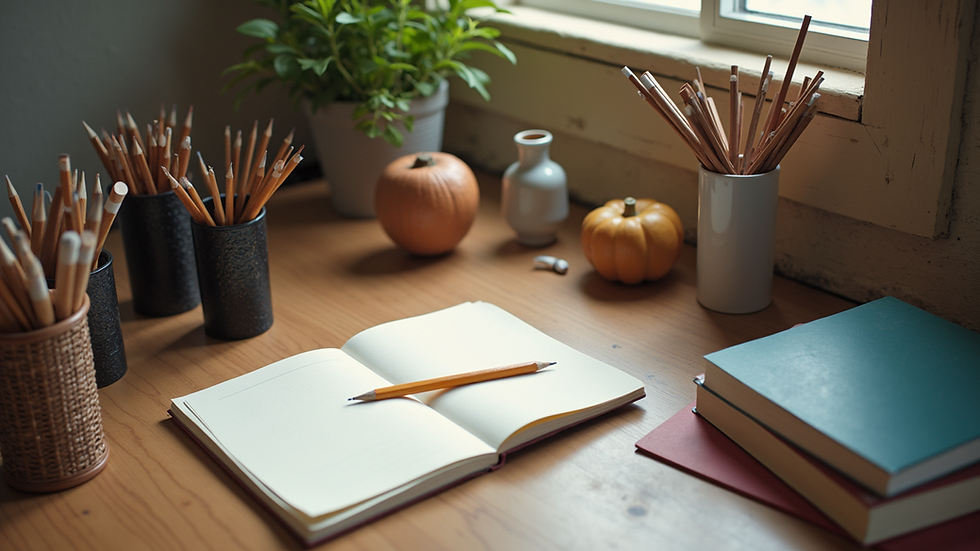How to Build Creative Homeschool Art Curriculum
- Magda Dia
- Aug 20
- 3 min read
Updated: Sep 16
Creativity is a vital skill that nurtures problem-solving, innovation, and self-expression. When homeschooling, fostering creativity can transform learning from a routine task into an exciting adventure. Encouraging homeschool creativity helps children develop confidence and a love for learning that lasts a lifetime. This guide offers practical strategies to weave creativity into your homeschool curriculum effectively.
Understanding the Importance of Homeschool Creativity
Creativity is not just about art or music; it is a way of thinking and approaching challenges. In a homeschool setting, creativity allows children to explore subjects in unique ways, making learning more engaging and meaningful.
Enhances critical thinking: Creative activities encourage children to think outside the box.
Builds confidence: When kids create something original, they feel proud and motivated.
Improves problem-solving skills: Creative tasks often require finding new solutions.
Supports emotional development: Expressing ideas and feelings through creative outlets helps emotional growth.
By integrating creativity into your homeschool curriculum, you provide a balanced education that goes beyond memorization and tests.

Practical Ways to Foster Homeschool Creativity
Incorporating creativity into your homeschool curriculum can be simple and fun. Here are some actionable ideas to get started:
1. Use Open-Ended Questions and Projects
Instead of asking questions with one correct answer, encourage children to explore multiple possibilities.
Ask "What would happen if...?" or "How can you solve this problem differently?"
Assign projects that allow for personal interpretation, such as writing a story, designing a model, or creating a science experiment.
2. Incorporate Arts and Crafts Regularly
Art is a natural way to boost creativity. Include drawing, painting, sculpting, or crafting in your weekly schedule.
Use different materials like clay, fabric, or recycled items.
Explore various art styles and techniques.
Consider enrolling in homeschool art classes to provide structured guidance and inspiration.
3. Encourage Play and Imaginative Activities
Play is a powerful tool for creative development.
Use role-playing games to explore history or literature.
Build with blocks or LEGOs to understand engineering concepts.
Create imaginary worlds or characters for storytelling.
4. Allow for Flexible Scheduling
Creativity often flourishes when children have time to explore ideas without pressure.
Set aside unstructured time for free exploration.
Avoid overloading the day with rigid tasks.
Let children pursue their interests deeply.
5. Use Technology Creatively
Technology can be a great aid in creative learning.
Use apps for digital drawing, music composition, or coding.
Encourage making videos or podcasts about topics studied.
Explore virtual museum tours or interactive science simulations.

Creating a Creative Learning Environment
The physical and emotional environment plays a crucial role in fostering creativity. Here are some tips to create a space that inspires:
1. Designate a Creative Space
Set up a dedicated area for art supplies, books, and projects.
Keep the space organized but accessible.
Include inspiring decorations like posters, plants, or student artwork.
2. Provide Diverse Materials
Stock a variety of art supplies, building materials, and tools.
Rotate materials regularly to keep interest high.
Include natural items like leaves, stones, or shells for sensory exploration.
3. Encourage Curiosity and Questions
Celebrate questions and curiosity as part of learning.
Model creative thinking by sharing your own ideas and experiments.
Avoid immediate correction; instead, guide children to find answers.
4. Foster a Positive Atmosphere
Praise effort and originality, not just results.
Allow mistakes as part of the creative process.
Encourage collaboration and sharing of ideas.

Integrating Creativity Across Subjects
Creativity can be infused into every subject, making learning more dynamic and enjoyable.
Language Arts
Write poems, stories, or plays.
Use storytelling to explore history or science topics.
Create comic strips or graphic novels.
Math
Use puzzles and games to teach concepts.
Explore patterns and shapes through art.
Encourage inventing math problems or real-life applications.
Science
Conduct hands-on experiments.
Build models or dioramas.
Use nature walks for observation and creative journaling.
Social Studies
Role-play historical events.
Create maps or timelines.
Design cultural projects like cooking or crafts.
Physical Education
Invent new games or sports.
Use dance or movement to express ideas.
Explore yoga or mindfulness creatively.
Encouraging Lifelong Creative Habits
Building creativity in homeschooling is about more than just activities; it’s about nurturing a mindset.
Model creativity: Share your own creative hobbies and projects.
Celebrate originality: Value unique ideas and approaches.
Encourage reflection: Have children talk or write about their creative process.
Provide opportunities for sharing: Organize presentations, exhibitions, or performances.
Stay open to change: Adapt the curriculum to follow children’s evolving interests.
By embedding these habits, you help children become confident, innovative thinkers ready for any challenge.
Creativity is a powerful tool that enriches homeschooling and prepares children for a bright future. By intentionally encouraging creative thinking and expression, you create a vibrant learning experience that inspires curiosity and joy. Whether through art, play, or exploration, fostering homeschool creativity opens doors to endless possibilities.




Comments